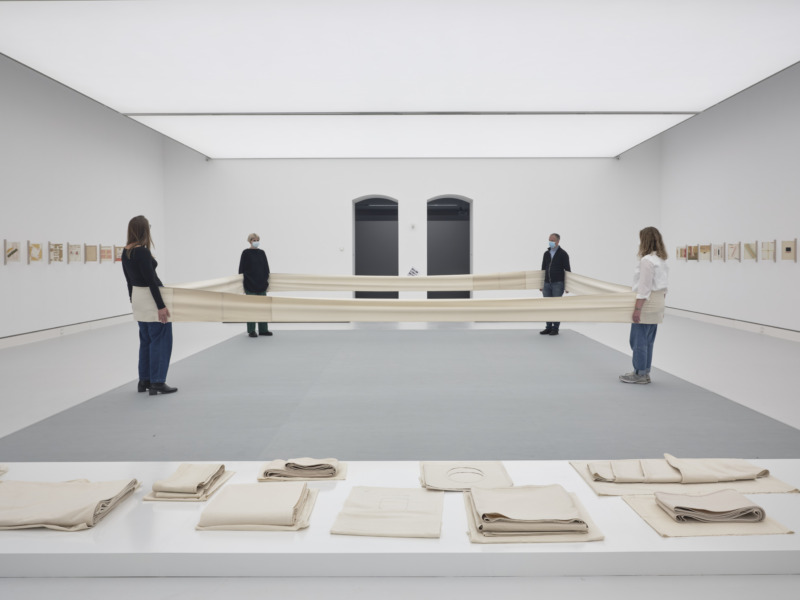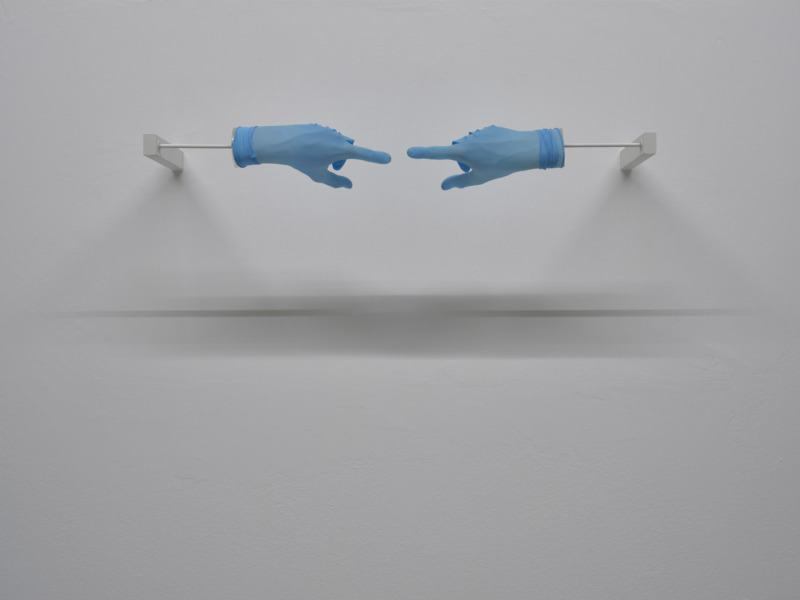
One Point Five
10/10/21—09/01/22
Lucy Beech & Edward Thomasson
Eva Grubinger
Hanne Lippard
Taus Makhacheva
Haroon Mirza
Agnieszka Polska
Anri Sala
Franz Erhard Walther
Maintaining physical distance from other people, staying away from crowds, reducing the number of your contacts – in a time of pandemic, separation and isolation (keeping populations apart) hold the promise that you will personally remain healthy and the spread of the virus itself will be contained. Segregation becomes something that is both therapeutic and an act of solidarity.
But the relationship between closeness and distance shapes our entire existence, as well as the way we deal with distance. A human being is a creature that lives through and with bodily contact, and this leads us out into the physical world. It is what enables a child’s immune system to develop in the first place. Over the course of our life we develop a feeling for what kind of closeness is damaging, appropriate or pleasurable. We keep away from fire, walk a safe distance from the road, avoid certain people. All these examples comprise learned techniques that protect us from dangers. Establishing distance between yourself and everyday life, specific events and other people is a crucial part of human interaction. But how does it work with a prescribed distance? Or when forgoing closeness is imposed upon us?
During a pandemic the mandatory distancing requirements extend further than 1.5 metres: “Stay home!” is the solution nowadays. That means: stay isolated, avoid any kind of physical contact in order to avoid endangering yourself and others. Stop existing in a social community.
Managing without closeness in the long term causes human longings to atrophy and an absence of stimuli makes people more narrow-minded. What does it mean when a society functions in a contactless manner? How do our bodies, feelings and ideas develop when movement, face-to-face encounters and a process of mutual exchange are taken away from them? And what happens with art when it develops exclusively in digital space, when we only have a limited perception of it through our senses and can no longer actually experience it? A work of art that you can’t relate to at a physical level, that you can’t get close to or away from, that you can’t access through feeling, smell or taste in association with movement and self-perception, is a different work, and it affects you – at best – differently.
One Point Five is an exhibition dedicated to distance and its multifacetedness. It highlights different forms of closeness over distances, and how this very category changes.
Everyone operates within a dynamic system, on an axis between two poles. This axis is called distance. The twin poles between which this axis are fixed, are called touch and the loss of contacts – isolation. Depending on the situation you get nearer to one pole or the other, you’re absorbed into it and become affiliated to it before veering apart once more and rotating together around the axis of distance.
The activation of the 1. Werksatz by Franz Erhard Walther weekly takes place on Wednesdays from 5pm to 7pm and on Saturdays and Sundays from 1pm to 5pm.
The exhibition is supported by Kultursommer Rheinland-Pfalz.
Curated by Stefanie Böttcher.


Installationsansicht: Franz Erhard Walther: Elf exhibition copies aus dem 1. Werksatz, 1963–1969, gelagert, 58 Objekte, Bauwollstoffe, Holz, Schaumstoffe, Leinen, Metall, Leder, Plastik, Nessel und andere Materialien, Maße der exhibition copies je nach

Installationsansicht: Anri Sala: Title Suspended (Sky Blue), 2008, Harz, Nitrilkautschuk, Elektromotor, Edition 3 + 1 AP, 67 × 110,5 × 24,5 cm, Courtesy the Artist and Hauser & Wirth, VG Bild-Kunst, Bonn, Photo: Norbert Miguletz
